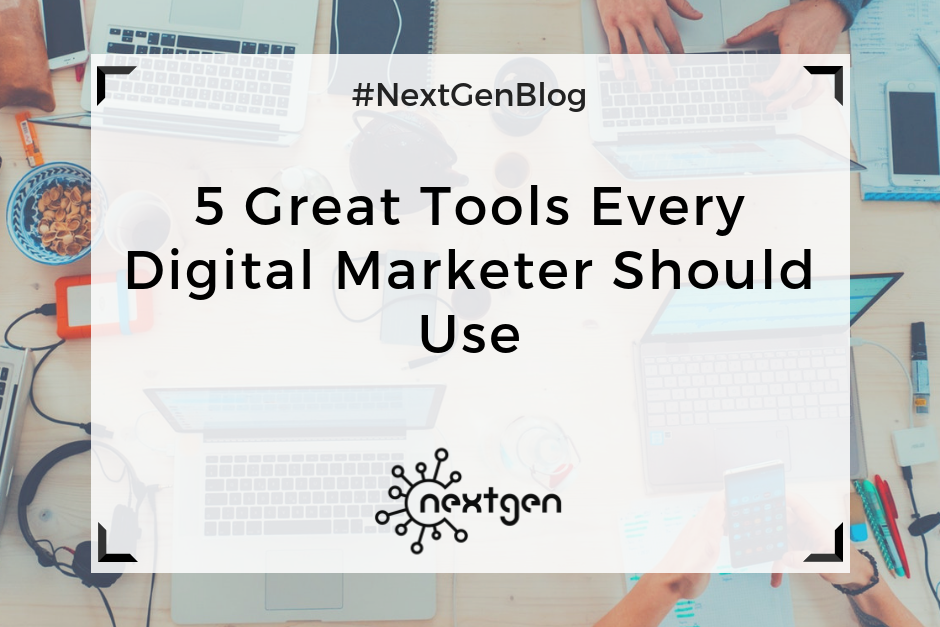
by Sofi | Oct 19, 2018 | Digital Marketing Tools
If you work as a digital marketer, you have to use various tools to promote brands through digital media. There are many digital marketing tools available for different purposes – and since digital marketing is still evolving – new tools are coming out all the time. However, you can’t use them all. Here is a list of 5 useful tools that you should definitely include in your digital marketing toolkit:
#1 WordPress
Every modern business owns a website these days. However, not all businesses can afford to hire developers to create their websites, so they use website building platforms that don’t require any coding skills. Currently, the most popular website building platform and content management system (CMS) is WordPress. It is very intuitive and easy to learn while offering a wide range of useful features. According to codeinwp.com, “WordPress is the fastest growing CMS, with roughly 500+ new sites being built daily in the top 10 million websites on the web”. This makes WordPress a very important tool that every digital marketer should know how to use.
#2 Hootsuite
Digital marketing is largely focused on social media and having a good social media strategy is essential for the success of any business operating in today’s digital world. Businesses often want to promote themselves on multiple social media platforms, but taking care of all social media activities on multiple platforms can be overwhelming. To ease that process, digital marketers can use Hootsuite, which is an online tool for managing multiple social media accounts from a single dashboard. You can use it to monitor social media activity on all of your profiles, schedule posts in advance, and engage with your audience. Most importantly, this tool saves digital marketers a lot of time, which they can use to focus on other aspects of their work.
#3 Facebook Business Manager
This is another social media tool, or more specifically, a tool for managing Facebook pages and ad accounts. In FBM, you can manage multiple pages and ad accounts, which is especially useful if you work with multiple clients. On every page you can publish and schedule content, get insights, create events, etc., while in the ad accounts you can create and run ads for your clients. Obviously, FBM is only useful for businesses that own a Facebook page, but Facebook is still the number one social network in terms of active users. Nowadays most businesses do own a Facebook page, and that’s why FBM is a must-have in every digital marketer’s toolkit.
#4 Canva
Canva is an online tool used for designing different types of graphics, which uses a simple drag-and-drop format. Featuring a variety of photos, illustrations, fonts, and other elements, it’s an excellent tool for creating visual content. There are ready-to-use design templates like: social media, presentation, infographic, book cover, blog banner, brochure, and many more. However, there’s also an option to create a design with your own custom dimensions, and many of the photos and other elements are available for free. Using Canva doesn’t require any special designing skills – all you need is a bit of creativity and imagination.
#5 MailChimp
The last tool on this list is MailChimp – an online tool for email marketing. Emails are still an effective method of communication, so a lot of businesses focus on creating effective email marketing campaigns. In MailChimp you can choose from a variety of email templates or design your own custom email using the available content blocks: image, text, buttons, social share buttons, etc. You can also create contact lists and campaigns and later check MailChimp reports to see how well your campaigns have performed. Creating beautiful emails and newsletters is often an essential part of an effective marketing strategy, so make sure you add this tool to your digital marketing arsenal.

by Sofi | Oct 12, 2018 | Other
Company contests, giveaways, and sweepstakes are a long-time favorite marketing technique. They can spread brand awareness, bring attention to a new product or service, or work toward a specific business goal. It’s highly likely that you’ve entered one of these contests at some point. Social media is a great platform to engage users and attract new customers via contests. This is a helpful way to help increase follower engagement in addition to whatever goal is driving your company contest. Here are some ideas for the best company contests to attract customers.
#1 Photo caption contest
Invite followers to create a creative or funny caption for a photo posted by your company. The winner of the photo caption contest can be selected either as a favorite of the staff or by user voting. In order to keep the content relative and working toward your goal, the picture should relate back to the company or a product.
#2 Selfie contest
Give your followers the spotlight! Create a contest based on users taking a “selfie” with your product. You can randomly select a winner or let other users vote on their favorite selfie. This provides real-world context for your product as well as illustrating that you already have customers that love your product.
#3 “Like” or “Tag a Friend” to win contest
This simple contest is an easy way to expand your contest’s reach on social media as well as gain followers. All participants have to do is “like” your page or post and “tag a friend” on the post. From there, you can randomly choose a winner that has followed all instructions.
#4 Cutest pet contest
Although this contest is ideal for pet-centric businesses, any company can have a cutest pet contest. Have participants submit a photo of their pet and then choose a winner based on user votes. To add relevancy to your business, try adding a theme to the rules such as Halloween costume, summer break, rainy day, etc.!
#5 Win a gift card contest
In order to add mass appeal to your contest, make the prize a gift card. This can help you draw in more participants since the winner can choose whatever they want.
#6 Feedback contest
This contest is a great way to gather feedback about a new product or service. Ask customers to provide feedback about a specific good, and choose a winner randomly from all participants.
#7 Re-post contest
Ask followers to share your post, whether it’s a photo, video, or text. Then, select a winner from those that re-posted your content. Using a specific hashtag for entries can help you keep track of the shares. This is a simple and fast way to expand your reach on social media.
Contests are a great way to reach larger audiences on social media while also increases engagement from the followers you already have. Whether promoting your brand or highlighting a new product, using contests is a great method for reaching marketing goals.
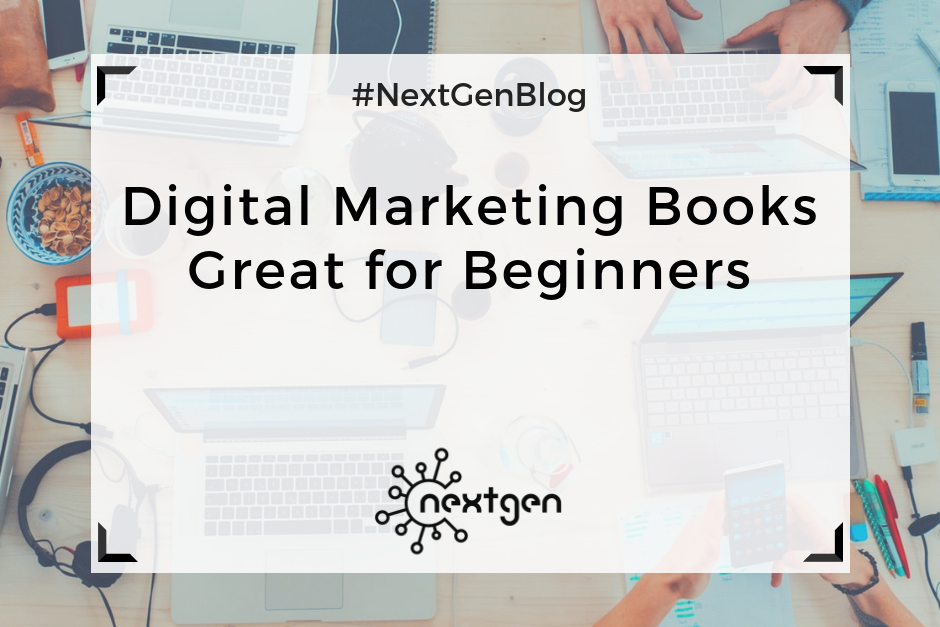
by Sofi | Oct 5, 2018 | Other
If you don’t have a college degree in digital marketing but want to pursue a career in the industry, or you’re a digital marketing newbie who needs a digital marketing strategy to promote your business–there are plenty of books that can help you achieve those goals. There is a rather large variety of digital marketing books that tackle different topics, but here is a list of books that are great for beginners:
#1 Digital Marketing For Dummies
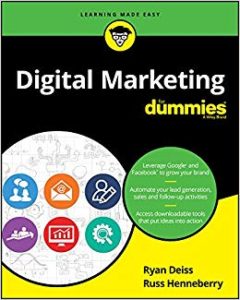
As the title suggests, this book is useful for people that don’t have any knowledge or experience in the field of digital marketing. It is a simple 300-page guide covering all important aspects of digital marketing, including: customer journey, marketing planning, landing pages, blogging, SEO, SEM, social, paid display, email, and data and analytics.
By reading this book you will be able to:
- Develop an individually tailored digital marketing campaign
- Offer an effective lead magnet to convert visitors
- Keep your audience invested in your brand, products, and services
- Create a return path with frequent and strategic communication with your customers
Authors: Ryan Deiss, Russ Henneberry
#2 Understanding Digital Marketing: Marketing Strategies for Engaging the Digital Generation
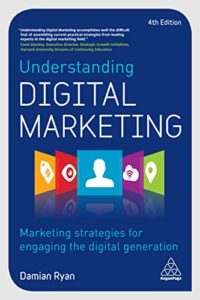
This book looks at the past, present, and future of digital marketing. It can help both beginners and experienced marketing professionals understand the digital media world and learn how to succeed. It covers topics such as: search marketing, social media, Google, mobile marketing, affiliate marketing, email marketing, performance marketing, customer engagement, and digital marketing strategies.
Author: Damian Ryan
#3 Digital Marketing: Strategy, Implementation, and Practice

This textbook is great for students or anybody interested in learning about digital marketing from scratch. It is an excellent guide for companies who want to benefit from digital media and improve their marketing strategies. It includes case studies and interviews with leading companies such as Facebook and eBay. Readers can gain a valuable and realistic understanding of digital marketing, as well as learn how to create their own digital marketing strategies.
Authors: Dave Chaffey, Fiona Ellis-Chadwick
#4 Digital Marketing Strategy: An Integrated Approach to Online Marketing
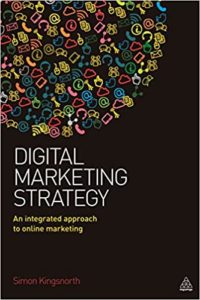
“Digital Marketing Strategy” is a book that provides a very comprehensive step by step guide through the process of creating a digital marketing strategy, including a lot of practical examples, case studies, illustrations, etc. It covers social media, SEO, content marketing, acquisition, personalization, marketing automation, user experience, customer service, and other relevant digital marketing topics. The book is an insightful and useful read for both marketing professionals and beginners.
Author: Simon Kingsnorth
#5 The art of digital marketing: The Definitive Guide to Creating Strategic, Targeted, and Measurable Online Campaigns
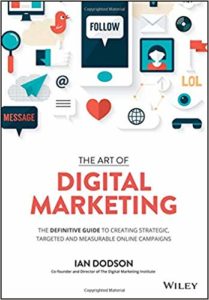
This book is centered around an innovative methodology for successful digital marketing: start with the customer and work backwards. It follows an approach of the Digital Marketing Institute (DMI) called the 3i principles -Initiate, Iterate and Integrate. The book also contains exercises and action plans that can help you create a digital marketing strategy, as well as insightful case studies for all chapters.
Reading this book will help you:
- Get inside the customer’s head with deep consumer research
- Constantly improve your campaigns based on feedback and interactions
- Integrate digital activities across channels, including traditional marketing
- Build campaigns based on customer choice and control
Author: Ian Dodson
***
Here are some honorable mentions of other books exploring different areas of digital marketing that you should definitely consider reading as well: “They ask, you answer” by Marcus Sheridan, “Youtulity” by Jay Baer, “The big data driven business” by Russell Glass and Sean Callahan, “The power of visual storytelling” by Ekaterina Walter, “Content Inc.” by Joe Pulizzi, “Convert!” by Ben Hunt, “You’re my favorite client” by Mike Monteiro, etc.
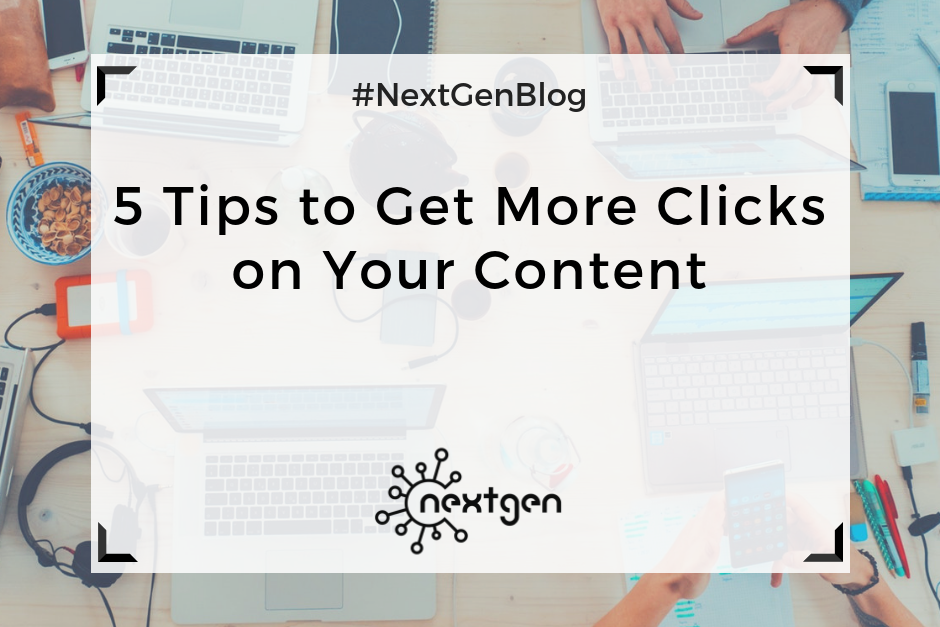
by Sofi | Sep 28, 2018 | Other
Everyone has told you that great content is key for your brand’s online success. So you regularly post great content on all of your social media, your website, your blog, etc…now what? Having online content is not enough to build your brand; you also want to attract the attention of your audience in a way that generates click-throughs. Here are five tips on how to get more clicks on your content.
#1 Create Catchy Headlines
Whenever you are creating a headline, you want to make sure that it does two things: grabs attention and peaks interest to find out more. There’s an overwhelming amount of content online, so your headline has to first make someone scrolling stop in their tracks. Then, it has to make them want to follow through by clicking on the content. One good method of achieving this is to leverage the “curiosity gap.” Headlines that use the “curiosity gap” are specific enough to intrigue the reader but not so specific that they satisfy the reader’s curiosity.
#2 Promise Value
Have you ever seen something online and questioned why it mattered? Your audience is more likely to click on content when they know exactly what value the piece is offering them. Many advertising copywriters suggest using the phrase “how to” in your content to provide a specific direction and what to expect. Your content should speak for itself as to why your audience should pay attention. It should be simple and straightforward so there is less thinking involved and more clicking!
#3 Clearly Address Your Audience
Part of creating great content in the first place is having a clearly defined audience. Do not be afraid to directly shout them out to direct them to your content. This lets the reader know that this material is right for them, and they should continue paying attention. You can grab attention by stating who the content is for or asking the reader if they fit a certain profile, such as “Beginner’s Guide For Small Business Startups” or “Are You an Independent Writer Seeking Work?”
#4 Include Visuals
No matter what device or platform your audience is using, images and videos attract more attention than plain text. Social media posts should always include visuals whenever possible to draw attention and stand out amongst a flood of other posts. Blog posts can use visuals to help the reader immediately understand what they are about to read and engage them to continue. Websites should use visuals, whether images or graphics, to direct the viewer as to what actions they should take. Visuals provide cues for your audience that help generate clicks.
#5 Place Links at Beginning of Posts
Social media is a great place to promote links and generate click-through traffic to websites and blogs. Generally, more people click on links provided in social media posts that are placed a quarter way in from the start. Although placing links at the very end can be more convenient, it is proven that the positioning does not lead to as many interactions.
These five tips on how to get more clicks on your content can make your posts more valuable for your business. Always keep in mind who your audience is and what action you want them to take.
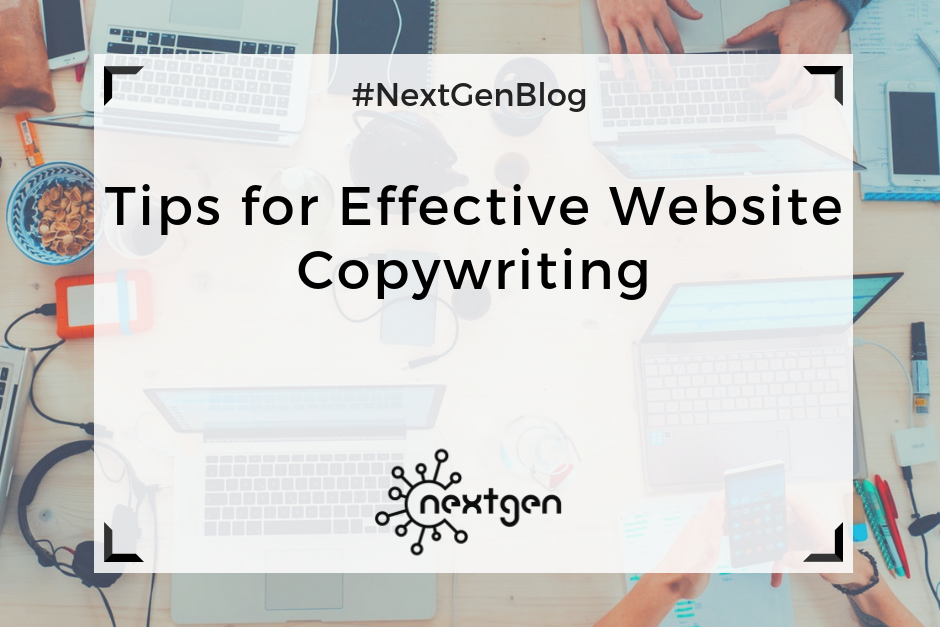
by Sofi | Sep 21, 2018 | Other
Writing good copy for your website is very important if you want to keep visitors interested in your business and products. The advertising pioneer Shirely Polykoff once said, “Copy is a direct conversation with the consumer.” So, it’s up to you to make the conversation enjoyable for your consumers.
If you want to start writing great web copy, try the following tips:
#1 Write clear and comprehensive content
First and foremost, the content you write on your website needs to be clear, to the point, and easy to understand. Also, you need to make sure you don’t have any grammar or punctuation mistakes. If your visitors don’t get what you’re saying, they will lose interest and leave your website.
#2 Be concise
When writing copy, try to use short words, short sentences, and short paragraphs because most people have short attention spans and avoid content that is too long to read. Make your content short and simple yet memorable.
#3 Make your content skimmable
To make your content skimmable, use informative headings, create numbered lists, bold important words and phrases, adjust font sizes, and use enough white space between paragraphs.
#4 Use active voice sentences
You should tend to use active voice sentences to provide a better experience for your readers. Active voice sentences are usually shorter, clearer, and more direct as opposed to passive voice sentences.
#5 Be positive
Positive words have a huge impact on people’s emotions, and they are more likely to remember them. This is why you should include as much positive language in your web copy as possible. There are times when negative language is appropriate as well, but you should be very careful of when and how you use it.
#6 Avoid using jargon
If you want your website to look professional you should avoid using jargon. If you use jargon, you risk getting misunderstood and some visitors might not take your website seriously. Instead of using jargon, stick to words that target your audience.
#7 Use storytelling
Build relationships with your customers and keep their attention by telling a good story. Honest and compelling storytelling will get your customers more interested in your business and products, and it will make you seem more credible and authentic in their eyes.
#8 Include visuals
To improve your audience experience on your website, enrich your content with different types of visuals whenever appropriate. You can include photos, videos, infographics, or any type of visual that will make your content more appealing and/or informative.
#9 Create CTAs
Having great web content is not enough if you want to convert your visitors into leads and customers. Encourage your visitors to take action on your website and move them down the sales funnel by creating a powerful call-to-action. Depending on your specific goals, you can create CTAs such as: Subscribe Now, Sing Up for Free, Download Brochure, etc.
#10 Include relevant sources
Back up your claims with relevant sources. For example, you can use statistics, articles, case studies, and other relevant sources to prove the information you share on your website is true.
#11 Proofread and edit
However confident you are that your web content is great, there is always a possibility that you made some mistakes. Therefore, always proofread your content to make sure everything is correct, and if necessary make some edits as well.











